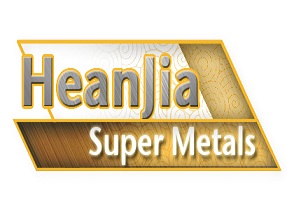You are here: home > Latest Buzz > Different Weaving methods of Monel Mesh
Product (738)
- Pure Nickel Products (38)
- Incoloy Products (74)
- Inconel Products (72)
-
FeCrAl Product
(99)

-
Nichrome Products
(68)

- Monel Products (36)
- Hastelloy Products (49)
- Nickel Iron Alloy Product (59)
-
Nickel Copper alloys
(47)

- Nonferrous Metal Product (27)
-
Resistance Wire
(90)

- Stainless Steel Product (42)
- Mesh Demister (20)
- Others (17)
Product Forms (14)
Quality Certificate (11)
Learning Gallery (30)
Incoloy News (9)
Inconel News (22)
Molybdenum News (7)
Nikrothal News (4)
Nichrome News (13)
Titanium News (2)
Nickel News (8)
Alloys House (30)
Tools (27)
Nickel alloy News (30)
Latest Buzz (30)
nickel chrome copper iron alloys news (28)
Credit Report
Products Index
Company Info
Heanjia Super-metals Co., Ltd. [China (Mainland)]
Business Type:Manufacturer, Trading Company
City: Beijing
Province/State: Beijing
Country/Region: China (Mainland)
Latest Buzz
Different Weaving methods of Monel Mesh
The weaving mold is the manner to wrap and weft the monel wire that are connected to each other. In this way several patterns can be made. These are explained following:
The plain weave of monel mesh is the popularly used weaving method. In this every wrap wire intersects each alternately up and down of every weft wid. The wrap and weft wires possess equal diameter in the mesh.
The plain weave of monel mesh is the popularly used weaving method. In this every wrap wire intersects each alternately up and down of every weft wid. The wrap and weft wires possess equal diameter in the mesh.
The Twill Weave monel mesh offers a denser wire network that fits best for the heavy mesh requirements. The wire locations are lesser stabilized as compare to the above weaving method.
Dutch plain weaving mesh is equivalent to the plain weaving where the wrap wires are denser and meshed closer. The dutch plain mesh is widely used to manufacture the industrial filtration fiber.
Dutch twill weave is the blend of Dutch weave and Twill weave Weave. It is equivalent to twill weaved mesh and it is denser and also packed closer. It offers the extremely strong wire fiber with extreme filtration so it is the best option to obtain the fine flirtation.
Five Heddle Weave monel mesh equips with plain outer face and wider lower face. It is best to perform under large strain and offers superior filer quality. Reverse Dutch Weave is similar as the Dutch weave however the position of wrap and weft wires has been altered. The thickness of weft wires is more as compare to wrap wires.
Several design properties alter, such as material, wire style, diameter, mesh open, weaving layout and finishing such as calendaring. The woven wire mesh can be designed from the various materials such as production of polyester, polyamide, pvdc (Saran ™), polyethylene ( PE ) and polypropylene ( PP ).Metals are for example: aluminum, (tinned) copper, (galvanized or plain) steel, stainless steel grades, and exotic alloys such as inconel, monel, Hastelloy and duplex.The popular kinds of steel are 304, 316 and 321.
Appropriate woven mesh is advisable to obtain the quality filtration. The woven wire mesh is offered in the stock to meet the client's requirements. The square woven mesh is obtained by the size of aperture and wire diameter. The mesh count is count of meshes present in each inch of the cloth. An accurate level is measured by following the bubble test method that is made by using alcohol as a liquid test and the precise size of an aperture concludes the largest ball shaped piece that can go through the wire mesh. This technique with the true aperture size of mesh has been approved in 1978.
Till now it has not become possible to use the parallel method to conclude the standard filter grade of a woven monel mesh. Thus, it becomes essential to trace the recordings carefully. The popular method used for this purpose is known as Multi Pass Test. The different size incorporated particles are used to passed through the testing mesh by providing the constant flow.
ISO 4783-1 is the international standard for industrial wire screens and woven wire mesh:
ISO 4783-1: Generalities
ISO 4783-2: Recommended blends for woven wire mesh
ISO 4783-3: Recommended blends for precrimped or pressure welded wire screens
ISO 4783-1: Generalities
ISO 4783-2: Recommended blends for woven wire mesh
ISO 4783-3: Recommended blends for precrimped or pressure welded wire screens
Pre Page:
Applications of Monel
Next Page:
Nickel Mesh for Diesel Sieving
.gif)


